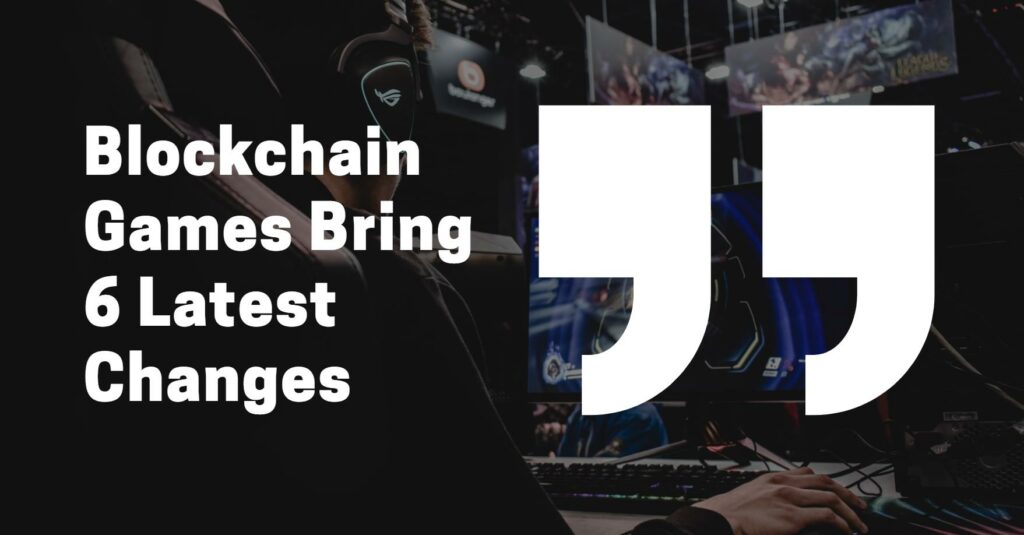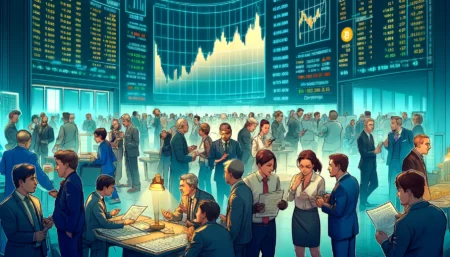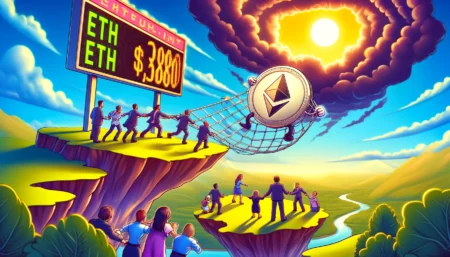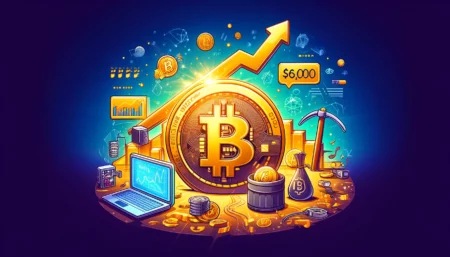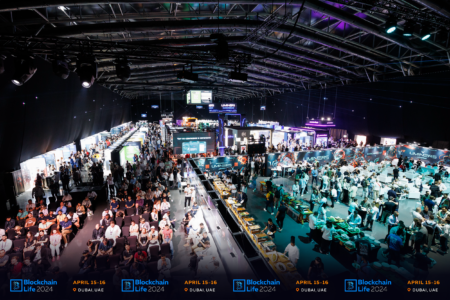How blockchain games can completely disrupt the game economy
There’s no denying that the video game industry is one of the largest and most profitable in the tech and entertainment industry today. It is estimated that more than one-third of the world’s population plays some type of video game. The global video game market is currently valued at between $15-200 billion by the end of 2021, with some estimates that the market could actually be as high as $336 billion.
The global video game market is expected to grow to an incredible $545.98 billion by 2028, with a projected compound annual growth rate (CAGR) of 13.20% over the next 7 years.

Crypto and blockchain games is probably the fastest growing and most exciting trend in the video game and blockchain industry. The crypto gaming industry generated about $321 million in revenue in 2020, and it will explode in 2021. The market cap of some gaming tokens has ballooned into the billions. Blockchain games revenue in 2021 is difficult to determine, but it is likely to be well over $1 billion, considering that the current market capitalization of the top 5 game coins is $25 billion, and the current total market value of blockchain game coins is close to $40 billion.
In this article, we will present various information about the current state of the crypto and blockchain gaming industry.
How blockchain games shifts orofits to players
Video game economics has traditionally been a one-way street. Players buy games, buy game subscriptions, and purchase in-game items, and all profits and revenue go to the game creator. However, crypto and blockchain games are trying to change this economic model, allowing players to earn substantial financial rewards by participating in consistent games.
Through the rise of games such as Axie infinity, the issuance of in-game tokens, currencies and NFTs, the income earned by individuals in many low-income countries from playing blockchain games has replaced their full-time income, and some very lucky market participants have even become hundreds of millionaire.
Top gaming coins and tokens 2021–2022
As of January 2022, the top game coins and tokens by market cap are:
- Decentraland: $6.5 billion
- Ah Crab: $6.38 billion
- The Sandbox: $5.56 billion
- Planet Gala: $3.52 billion
- Flow (Dapper Labs): $2.95 billion
In the next few sections, we’ll take a deep dive into each gaming token, the gaming platform they represent, and what makes them so popular with players and investors.
Axie Infinity

While this article focuses on a broad range of crypto gaming topics, we would be remiss if we didn’t discuss Axie Infinity, the world’s most popular blockchain-based game for making money, first.
The Pokémon-influenced Axie allows players to breed animated pet characters called Axies that can engage in P2P (peer-to-peer) combat. Axies can make money by selling, trading, collecting and staking. Axie Game World contains two tokens, Axie Infinity Shard (AXS) and Smooth Love Potion (SLP). AXS is the main token of the game, while SLP tokens earned by winning battles or completing missions are needed to nurture Axie.
While Axies are ERC-721 NFTs, they can be sold and traded in-game for AXS, which can be easily converted to Bitcoin BTC -1.36%, Ethereum ETH -1.08% or USD on many major exchanges. Some Axies have been selling for unbelievably high prices in recent months. For example, the Axie #643 sold for almost £230,000 (~$309,000) and is currently on sale for a staggering $623,328. Several other Axies sold for about $230,000 in August and September. Axie also allows users to buy land; a parcel of land sold for $2.3 million in November 2021, one of the largest virtual land sales ever recorded.
Incredibly, the profits made by Axie players have led some players, especially in developing countries such as the Philippines, to quit their jobs to play Axie full-time. Many players report earning $300–350 per week from the game, far exceeding the average salary in many countries.
However, getting started with Axie can be expensive. It typically costs $1,000 or more to grow their first Axie, so many established Axie community members have started funding players’ first Axies by offering scholarships. Sponsors, who may not have the time or interest to play the game full-time, act more like investors, putting in start-up capital while taking a cut of players’ profits based on pre-determined deals.
Decentraland

Operating on the Ethereum blockchain, Decentaland is currently the largest game currency by market value and the largest online virtual land game in existence. The game allows users to utilize its builder tools to create original art, challenges and scenarios, and allows them to participate in events and contests with prizes.
However, the main strategy of the game is to allow users to buy and sell virtual land as NFTs on its marketplace. Each owner controls exactly what is posted on their parcels, and each parcel is identified by x and y coordinates, just like a real-world property. In addition to land, users can buy real estate, wearable avatars, and even names, among other paraphernalia.
The price of Decentraland NFT assets has hit record highs in recent months, with one virtual asset sold for a record $2.4 million in November 2021. Like most secondary market NFT sales on Decentraland, this sale was primarily done on the Decentraland Collection of NFT marketplace OpenSea, which currently has nearly 100,000 NFT lands and items listed for sale.
Unlike many blockchain games, Decentraland is governed through DAOs (Decentralized Autonomous Organizations). Additionally, Decentraland controls the MANA token, whose smart contracts have been dropped and allow (in theory) full community governance.
“The Decentraland DAO owns the most important smart contracts and assets that make up Decentraland — land contracts, estate contracts, wearables, content servers, and marketplaces. It also has a large MANA wallet, which allows it to be truly autonomous and serve the entire Decentraland subsidies for various operations and programs.”
According to Decentraland’s website
The Decentraland DAO allows token holders to vote on a wide range of in-game issues, including:
- Land auction dates and details
- What new wearables are allowed and banned
- What upgrades can land and estates allow
- Which members can join the game’s Governing Council, or Council for short
Sandbox

When it comes to virtual land in a virtual world, The Sandbox is second only to Decentraland in popularity. Like Decentraland, players can purchase virtual lands, however, The Sandbox differs in its overall gameplay due to its emphasis on using physics and elements to create in-game items and experiences. Users can create original objects using elements and materials such as glass, sand, water, soil, lighting, lava, and even mechanical equipment.
The Sandbox’s popularity has also benefited from endorsements from its wide range of celebrity partners, including The Smurfs, Deadmau5 and Snoop Dogg, who invest in cosmic lands, host private metaverse parties, and regularly drop his own original NFTs into the game .
Perhaps most importantly, the Sandbox isn’t just its own virtual metaverse, it’s a platform where players can build their own video games without any coding or previous technical experience.
Every game creator can cash out their games through the in-game monetization model, as well as create and market their own digital assets within the game.
In addition to raising funds through its popular SAND token, the sandbox has also attracted significant institutional investment. In November 2021, SoftBank led a $93 million funding round for Sandbox. Like Decentraland, The Sandbox is built on the Ethereum blockchain.
Gala Games

Gala Games is not a game. It is a platform built on the Ethereum blockchain, designed to make it easy for game developers to create advanced blockchain games. Games currently in development on the Gala platform include:
- The Walking Dead: A popular survival-based drama based on development. This is a personal survival MMORPG based on the popular TV series, developed by the popular game brand Ember Games.
- Legacy: A business simulation game built by 22cans for PC and Mac.
- Echoes of Empire: A 4x space strategy game from gaming giant Ion Games.
- Mirandus: A fantasy RPG created by Gala himself.
Gala currently operates in a semi-decentralized model, and anyone with Gala’s permission can become a licensed node operator to obtain local GALA tokens and limited edition Gala NFTs. Like the sandbox, Gala has seen significant outside investment in recent months. In December 2021, Gala announced a $100 million fund in a joint venture with C2 to help develop new blockchain games on the platform, with a focus on gaming monetization models.
While Gala currently runs on the Ethereum blockchain, it is transitioning to its own proprietary blockchain, GalaChain, which it says will offer “almost free” transactions across the entire Gala gaming ecosystem.
Flow

Kind of like Gala, Flow is not a game but a custom blockchain designed for crypto and NFT game development. It has exceptional performance and is designed specifically to enable games and protocols to attract millions (or even billions) of users to regularly buy, trade, and interact with NFTs.
Unlike traditional blockchains, Flow divides its consensus algorithm into four distinct roles, ideal even for beginners, as long as they have a reliable internet connection.
According to Flow’s website, validators can join Flow in one of four roles:
- Collector Nodes Improve Efficiency
- Validator nodes guarantee correctness
- Execution nodes achieve speed and scale
- Consensus nodes ensure decentralization
Flow currently supports some of the largest NFT marketplaces and products, including the NBA Top Shot Marketplace, CryptoKitties, and digital collectibles from Dr. Seuss and the UFC.
Crypto, blockchain and MMORPGs
MMORPGs like World of Warcraft and Runescape that we mentioned at the beginning of this article are one of the largest segments in the video game market. For example, World of Warcraft has an estimated 116 million players as of December 2021, while Runescape has an estimated 48 million players between its original and classic releases. However, MMORPGs have yet to catch on in the blockchain and crypto world — but that is slowly changing.
Some of the most popular MMORPG blockchain games currently on the market include:
SolChicks

SolChicks is currently the most popular MMORPG blockchain game. It works a bit like Axie Infinity in that it allows players to nurture, train, and buy playable NFTs, and battle them for rewards, which they can then sell. Players can also engage in multiplayer online battles (team versus team) to maximize potential rewards.
SIDUS

Sidus is a browser-based sci-fi action game that allows players to engage in galactic adventures, looting the galaxy for rewards. Players can train and upgrade with NFT-based legions, and they can also engage in group battles and one-on-one duels with teams on multiplayer battlefields.
Players can also craft new game items and trade and sell them, as well as breed and train wild animals, farm resources, and even participate in interplanetary councils.
Worldwide Webb

Worldwide Webb is a game based on a pixel art virtual world. Unlike other blockchain games, it allows gamers to import their own NFTs and use them as playable character avatars. The game is currently interoperable with popular projects like CryptoPunks, Cool Cats, ApeGang, HeadDao, CryptoToads, CyberKongz and more. Just like in Decentraland, gamers can buy in-game land on OpenSea. Players can also take part in interactive NPC missions.
The importance of gaming guilds
Since the development of MMORPGs like World of Warcraft and RuneScape in the mid-90s, gaming guilds and clans have become an increasingly popular way for players to join forces to take advantage of in-game economies of scale and take on team missions , and get more in-game currency to buy various upgrades.
However, before crypto and blockchain gaming, gaming guilds and clans were usually limited to one game and (with very few exceptions) did not generate any real-world profits. Still, over the past year, crypto gaming guilds have exploded, even being funded by real-world venture capital.
For example, in 2021, large VC funds like Andreessen Horowitz (a16z), Pantera Capital, and DeFiance Capital have led multiple seed rounds for Gaming Guild. For example, Yield Guild Games raised an astonishing $22.4 million, while GuildFi raised an equally astonishing $6 million in seed funding.
Like traditional gaming guilds and clans, crypto gaming guilds allow members to improve their economic status in the game, but this time it involves real money. In many cases, guilds fund new player activities, allowing them to purchase necessary in-game tools and upgrades in exchange for a percentage of in-game revenue.
Additionally, a major difference between traditional gaming guilds and crypto gaming guilds is that these new guilds are not limited to just one game; instead, they fund and support players to play various blockchain-based games in order to spread their investments and maximize potential profit.
As we mentioned before, a classic example of a guild sponsoring new players is the popular sponsorship ceremony in Axie Infinity blockchain games, where guilds help new players get expensive Axies (digital creatures) by renting a guild.
Some analysts believe that guilds, rather than the game itself, will be the real power players in the new crypto game metaverse, as their endorsement (or lack thereof) of the main guild could make or break the game. This leverage could help ensure that crypto and blockchain games remain fair and profitable for players, especially when it comes to token economics. For example, if a game’s creator were to hoard tokens or unfairly manipulate the in-game price of an NFT, the guild could switch to a different game, potentially taking away thousands of loyal players.
In addition to having a major impact on the nascent crypto gaming industry, some of the most popular crypto gaming guilds, including Merit Circle, YGG, and GuildFi, have started issuing their own tokens. Some have even created DAOs to decentralize guild leadership and potentially prevent guild “whales” from ruling guilds, creating a more inclusive environment for new players.
The largest guild, YGG, currently has a market cap of $461 million, according to CoinGecko. While this is much smaller than the capitalization of the biggest blockchain games themselves, this may change in the future as guilds become larger and more popular.
Cryptocurrencies and NFTs in traditional games
Many traditional gaming companies are looking to jump on the bandwagon after seeing the astounding success and growth rate of crypto and blockchain gaming. Recently, the CEO of major game publisher Electronic Arts (EA) told investors in the game that collectible NFTs are “an important part of the future of our industry.” With over $100 billion in in-game virtual goods purchased in 2021 alone, it makes sense that many video game companies decide to convert these goods into NFTs to increase their scarcity and facilitate the creation of secondary markets.
However, integrating NFTs into traditional games is still in its infancy. Recently, gaming giant Ubisoft announced that it will start bringing NFTs to its popular game Ghost Recon. These NFTs, dubbed “digits,” will initially be released as game items, including equipment, weapons, and vehicles. Each item has its own unique serial number, and each player can only own one of each item, potentially increasing its scarcity over time.
Ghost Recon’s NFTs will be built on Tezos XTZ -1.78%, a proof-of-stake blockchain, which Ubisoft hopes will alleviate concerns about the impact of NFTs’ minting and transfers on blockchain environments like Ethereum, which has not yet fully evolved from Proof of Work transitions to its planned Proof of Stake model. While these NFTs can be resold, they are not dynamic and do not affect gameplay, which may reduce their popularity as NFTs directly affect many, if not most, blockchain and crypto-native games Gameplay.
Zynga, creator of the popular social media game Farmville, is also planning to enter the NFT market, announcing plans to sell thousands of NFTs in 2022.
While some traditional gaming companies are choosing to ride the wave, others are more cautious. Valve recently banned blockchain games from running on Steam, and Xbox and Epic Games (creators of Fortnite) announced they had no plans to include NFTs or cryptocurrencies in future products, citing concerns about gamers being exploited.
These concerns are not entirely unfounded. For example, fans of the popular online game Neopets began protesting the game’s release of NFTs in October, urging players to boycott the game until the project was canceled.
Whether NFT launches will increase user excitement or provoke backlash from gamers will likely depend largely on how they operate within the gaming ecosystem. If NFTs, tokens, and cryptocurrencies are considered to increase financial incentives for users, such as in game models where blockchain games like Axie Infinity make money, they may be considered net benefits to users. However, if NFTs are released at exorbitant reserve prices, and if gamers have little chance of benefiting from these products, they may be seen as greedy cash grabs by video game developers who are only interested in increasing their profits.
Dynamic NFTs and Oracles in Crypto and Blockchain Games
If almost all blockchain games have one thing in common, it is NFTs. Most of these NFTs are static, which means they stay the same over time. However, dynamic NFTs, i.e. NFTs that may change over time or the external environment, are likely to start to become more popular. For example, Ubisoft’s weapon NFT placement mentioned above is actually a dynamic NFT that changes in nature every time it is transferred or sold to a new user.
In addition to being affected by in-game factors, in-game dynamic NFTs may also be affected by external real-world events. These may include news events, token prices, weather data, political events or other factors. For example, NFTs in military strategy games may change based on the strength of real-world armies or other similar factors. Since blockchains are usually closed systems and it is difficult to obtain external data, these dynamic NFTs often need to rely on oracles, i.e. third-party software providers, to bring real-world off-chain data into the blockchain. Oracles can be centralized.
However, oracles will not be the only software products used by the fast-growing crypto and blockchain gaming industry. Just as blockchain and cryptocurrencies have impacted the gaming market, gaming in the world of blockchain and cryptocurrencies is likely to spawn more new blockchains, protocols and software products to meet the rapidly growing needs of this dynamic industry .
